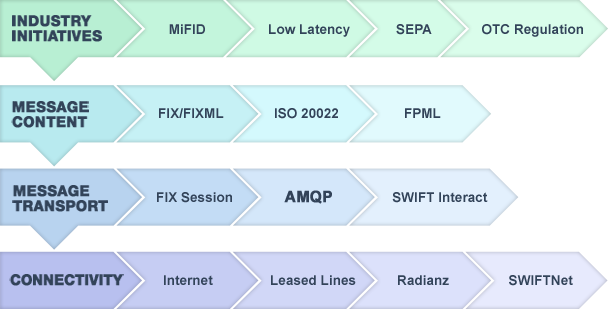Traditional efforts by banks and stock exchanges to optimize the cost of their IT infrastructures and automate electronic transactions have been limited by proprietary vendor and legacy protocols.
Examples of these transactions include:
- Communications to customers, such as reliably disseminating stock information fairly to clients, with minimal delays
- Back-end communications with companies and service providers, such as conducting financial exchanges between banks, stock exchanges, clearing houses and other financial service institutions
- Internal communications between application components such as accepting and processing orders from clients or distributing price and inventory information in real-time across global networks
These drivers have led Financial Services industry to invest heavily in B2B protocols like FPML and FIX. Unfortunately, being business minded people, critical technical details in how to actually send these message were omitted or overly simplified.
For Financial institutions, AMQP fills the air gap between their B2B business transactions and the network.
The following diagram illustrates the relationship between these efforts and AMQP.

Network to Business Partners
AMQP helps banks and stock exchanges simplify middleware software integrations and reduce middleware costs through interoperable business messaging. AMQP eliminates the communication gaps between proprietary middleware products written for different platforms, critical systems and application components located within enterprise and external systems. By complying with the AMQP standard, value-bearing transactions can be sent across and between organizations and virtual cloud computing environments in a more efficient and secure manner.
2011/2 Opportunity for Change
With the recent financial crisis, and the resulting increase in standardized transaction flows, clearing and regulator oversight there is a need to revisit and re-engineer how firms are connected.
This opens the opportunity for the now finalised AMQP to step in and serve as a common message bus for the financial services industry, not only to meet the needs of regulators, but to make a step change in the efficiency of financial business processes.
